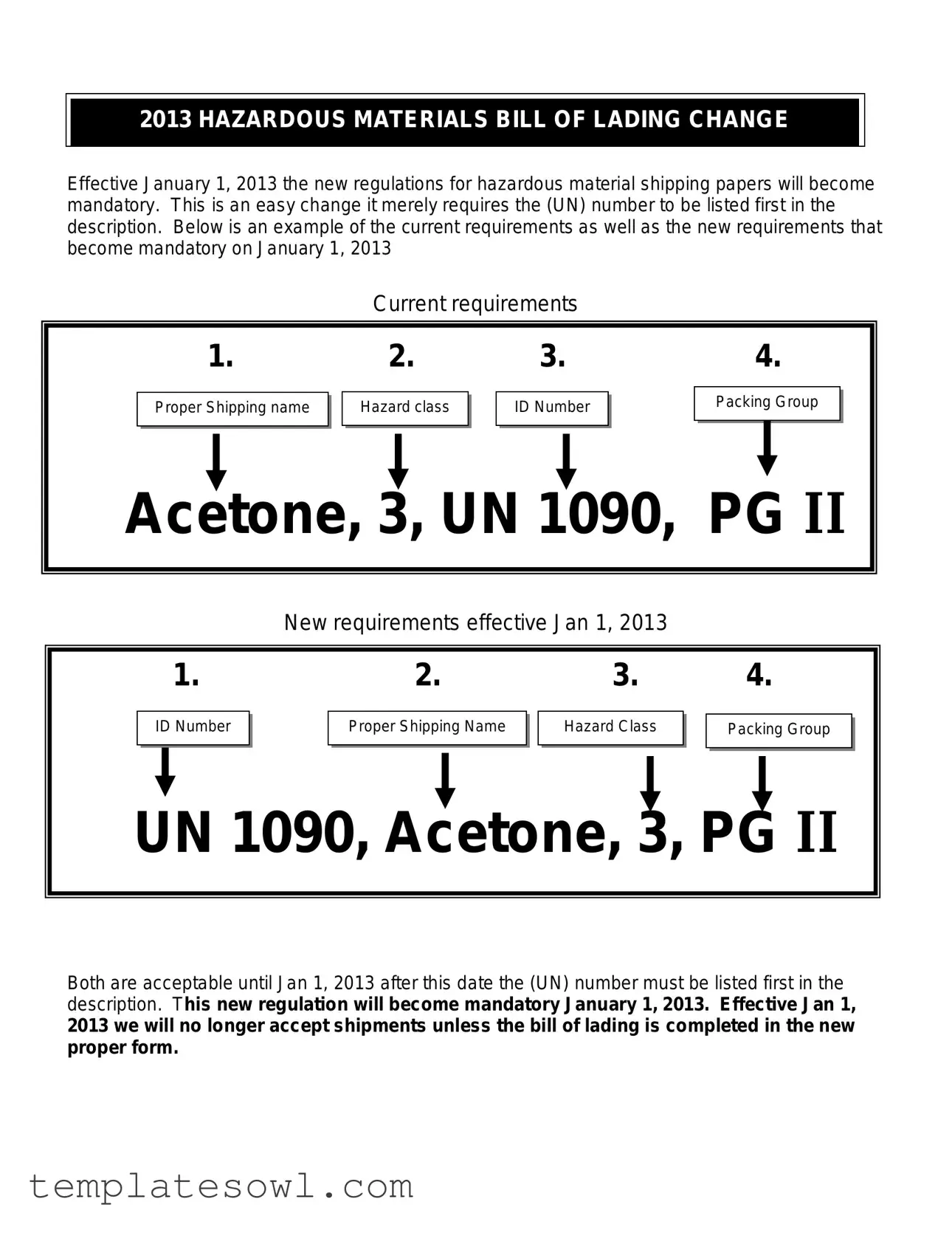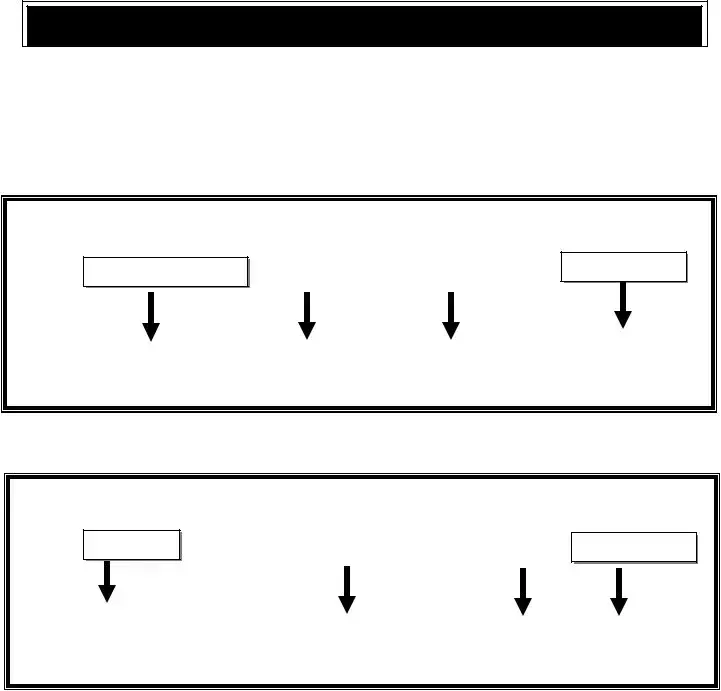Filling out the Hazardous Bill of Lading (BOL) form correctly is crucial for the safe and compliant transport of hazardous materials. Many individuals make mistakes that can lead to costly delays, fines, or even hazardous situations. Here are some common errors to avoid.
One frequent mistake is placing the UN number in the wrong order. From January 1, 2013, the new regulations require the UN number to be listed first in the description. Failing to do so not only violates the regulations but can also create confusion for shipping personnel who need to identify materials quickly. Remember, the order matters!
Another common error is neglecting to include the proper shipping name. This is essential for the safe handling of hazardous materials. The shipping name should accurately describe the substance being transported. Ignoring this requirement may result in miscommunication during transit, which could lead to accidents.
Additionally, many people forget to verify the hazard class and its corresponding ID number. Each hazardous material falls into a specific category that dictates how it should be handled. Failing to include this information can lead to improper handling by carriers, contributing to safety risks.
Moreover, providing an incorrect packing group can also be detrimental. Packing groups indicate the degree of danger associated with a material. For instance, group I represents high danger, while group III indicates low danger. Misclassifying a material could lead to improper storage and handling, endangering workers and the environment.
Another common oversight is using outdated information. As of the regulation change in 2013, it’s vital to ensure that all entries on the BOL form reflect the latest requirements. Relying on older forms can lead to non-compliance and unnecessary shipment delays.
Incomplete information is another pitfall. Omissions can render the BOL incomplete, resulting in refusal of the shipment or fines. Always double-check to make sure every section of the form contains accurate and thorough information. Incomplete forms are often sent back for corrections, which can disrupt timelines.
Some individuals also neglect the importance of checking recipient details. Accurate contact information ensures that packages can be traced back to the sender in case of any issues. Missing or incorrect details can complicate communications and create liability concerns.
Many shippers overlook the necessity of including emergency contact information on the BOL. In the event of an incident, having immediate access to the relevant contacts can make a significant difference in resolving issues quickly and effectively.
Finally, failing to keep copies of the completed BOL is a common mistake. It’s essential to maintain records for each shipment, as these documents may be required for compliance checks or in the event of an incident. Good record-keeping practices can protect businesses from potential liabilities.
By avoiding these common mistakes, shippers can ensure they handle hazardous materials safely and comply with regulatory requirements, improving outcomes for everyone involved.

